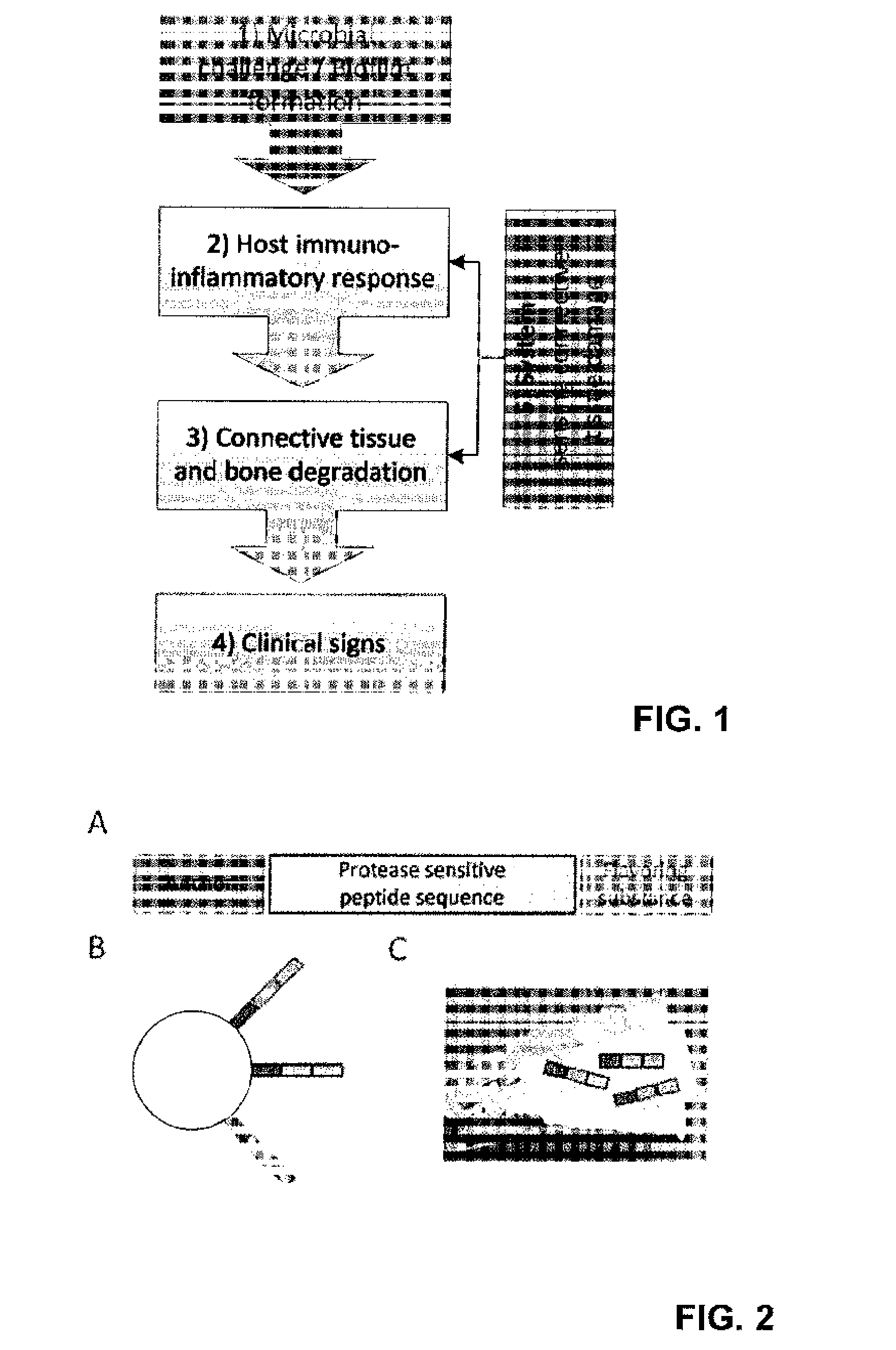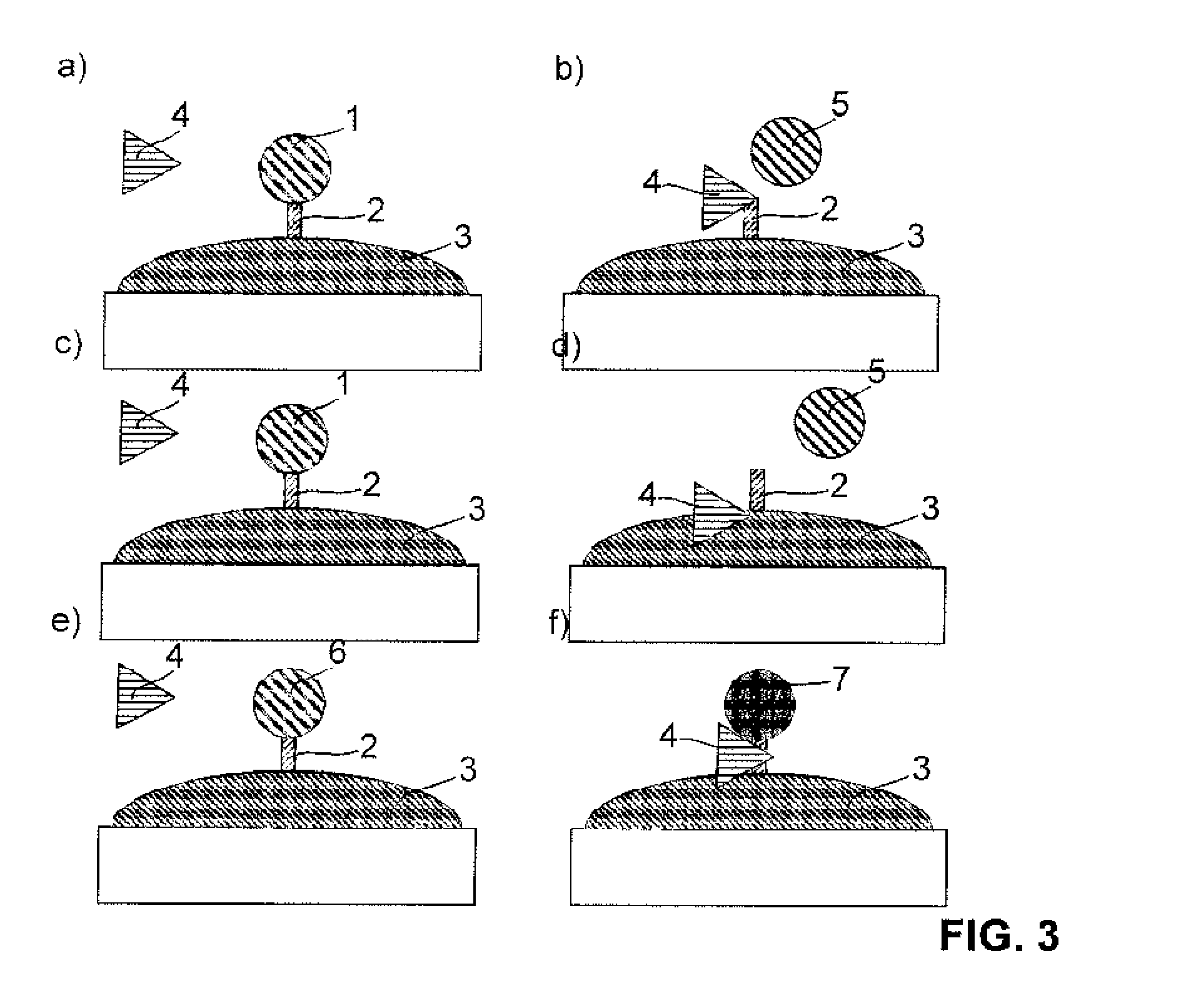Device for the diagnosis of inflammatory tissues in dental applications
a technology for detecting inflammatory tissues and dental applications, applied in biochemistry equipment, biochemistry equipment and processes, sensors, etc., can solve the problems that none of these applications relate to the detection of inflammatory tissues in the mouth or suggest such a use, and achieve the effect of convenient us
- Summary
- Abstract
- Description
- Claims
- Application Information
AI Technical Summary
Benefits of technology
Problems solved by technology
Method used
Image
Examples
example 1
[0062]1.5 mmol of the flavor molecule is dissolved in dichloromethane and consecutively 3 mmol of adipic acid, 3 mmol of N,N-dicyclohexylcarbodiimide and 3 mmol of 4-(N,N-dimethylamino)pyridine are added. The mixture is stirred for 24 hours at room temperature. Then, the reaction mixture is washed thoroughly with saturated NaHCO3 solution, 2N HCl solution and water. The organic phase is isolated, dried over MgSO4, and evaporated to dryness under vacuum. The obtained raw material is purified by flash chromatography using a silica gel column and chloroform / methanol as eluent.
example 2
[0063]3 mmol dodecanedioic acid are stirred at room temperature with 3 mmol of 2,4,6-trichlorobenzoyl chloride and 10 mmol of triethylamine in toluene. After 3 hours stirring, 3 mmol of quinine and 3 mmol of 4-(N,N-dimethylamino)pyridine are added and the mixture is stirred for another 20 hours. The reaction mixture is washed thoroughly with saturated NaHCO3 solution, and water, and the aqueous phase is washed twice with ethyl acetate. The organic phases are unified and dried over MgSO4. After evaporation of the solvent under vacuum, the obtained raw material is purified by flash chromatography using a silica gel column and chloroform:methanol=3:1 as eluent. Yield: 47%, brown oil. IR (ATR, cm-1): 2923, 2852, 1738, 1623, 1590, 1505, 1476, 1433, 1357, 1305, 1229, 1157, 1090, 1033, 995, 914, 852, 829, 762, 719.
example 3
[0064]Step 1: A mixture of 1 mmol of quinine, 1 mmol of 11-bromo-undecanoic acid, 1 mmol of N,N-dicyclohexylcarbodiimide and 1 mmol of 4-(N,N-dimethylamino)pyridine in dry dichloromethane are stirred for 24 h at room temperature. Then, the reaction mixture is washed thoroughly with saturated NaHCO3 solution, 2N HCl solution and water. The organic phase is isolated, dried over MgSO4, and evaporated to dryness under vacuum. The product is further purified by flash chromatography using a silica gel column and methanol as eluent. Yield: 20%, yellow oil. IR (ATR, cm-1): 3323, 2924, 2852, 2119, 1738, 1695, 1619, 1571, 1509, 1452, 1357, 1310, 1223, 1167, 1086, 1029, 990, 914, 852, 833, 719, 647.
[0065]Step 2: 1 mmol of the flavor molecule containing a bromo group is dissolved in DMF and an excess of sodium azide (3 mmol) is added. The mixture is stirred for 20 h at room temperature. After addition of water the reaction mixture is extracted three times with ethyl acetate. The received raw pr...
PUM
 Login to View More
Login to View More Abstract
Description
Claims
Application Information
 Login to View More
Login to View More - R&D
- Intellectual Property
- Life Sciences
- Materials
- Tech Scout
- Unparalleled Data Quality
- Higher Quality Content
- 60% Fewer Hallucinations
Browse by: Latest US Patents, China's latest patents, Technical Efficacy Thesaurus, Application Domain, Technology Topic, Popular Technical Reports.
© 2025 PatSnap. All rights reserved.Legal|Privacy policy|Modern Slavery Act Transparency Statement|Sitemap|About US| Contact US: help@patsnap.com


